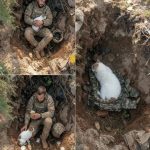Valley Stream, N.Y. — On the afternoon of March 3, 1989

Valley Stream, N.Y. — On the afternoon of March 3, 1989, 13-year-old Kelly Ann Tinyes disappeared from her family home on Horton Road after answering a phone call from someone who identified himself as “John.”
Kelly, an eighth-grader known for cheerleading and dreams of studying marine biology, did not return home that evening.
The following day, March 4, her body was discovered in the basement of 21-year-old Robert Golub’s nearby residence.
The discovery shocked the tight-knit Valley Stream community and immediately launched a high-profile police investigation.
An autopsy determined that Kelly died of strangulation and multiple stab wounds suffered between approximately 3:30 and 6:00 p.m. on March 3.
Investigators quickly focused on Golub, a local bodybuilder with a minor theft record, after physical evidence linked him to the crime scene.
A bloody handprint found in the Golub home matched Golub, and cuts on his hands along with a sock containing Kelly’s blood type added to the mounting case.
Forensic specialists also identified bite marks and produced DNA and dental comparisons that became critical pieces of evidence.
At the time, the use of bite-mark analysis and DNA to tie a suspect to such evidence marked a notable development in New York criminal forensics.
Golub was arrested on March 5, 1989, and charged with murder and related offenses.
Prosecutors contended that he lured Kelly to his home by phone, assaulted and killed her, then concealed her body in a sleeping bag in the basement.
On November 16, 1989, a Nassau County jury convicted Robert Golub of second-degree murder, rape, sodomy, and weapons possession.
On February 2, 1990, he was sentenced to 25 years to life in prison.
Golub’s appeals in 1992 and 1997 were denied, and subsequent inquiries into whether his brother may have been involved — including a 2009 probe — produced no new charges.
Kelly’s murder, later branded in local reporting as “Hell on Horton Road,” left an enduring mark on the neighborhood and on the families involved.
The Tinyes family pursued legal action that led to a $602 million lawsuit; the case was later settled out of court.
In Kelly’s memory, her family and community established a scholarship and other remembrances to honor her life and ambitions.
As of October 2025, Robert Golub, now 56, remains incarcerated at Green Haven Correctional Facility.
Although he became eligible for parole in 2015, review boards have repeatedly denied release, most recently in 2024 following a petition driven by Kelly’s relatives.
The case continues to draw public attention and periodic media retrospectives, reflecting both grief and ongoing public interest.
Community members mark Horton Road with a small pink ribbon and gather annually for vigils to remember Kelly.
Public reaction over the years has included deep anger and calls for harsh punishment from residents and online commenters alike.
Victim advocates point to the Tinyes case as an example of the need for sustained support for families and lasting reforms in child safety and investigative practice.
Legal observers note the case’s role in advancing forensic techniques and in shaping prosecutorial strategy for violent crimes against children.
For the Tinyes family, the loss remains personal and permanent — a young life ended before it could begin.
Kelly is remembered by classmates and loved ones as a bright teenager with ambitions, friends, and a future cut tragically short.
Her story remains a sobering reminder of the vulnerability of children and the long shadow violent crime casts over a community.
Officials and community leaders say the annual vigils and the scholarship keep Kelly’s memory alive while reinforcing the commitment to protect other children.
The investigation and trial closed one chapter, but the family’s calls for remembrance and justice continue to resonate across Valley Stream and beyond.











